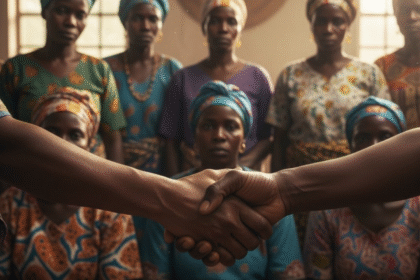New tech and AI fight the extinction of Africa’s linguistic soul
By Brian Ochieng Akoko, Reporter | Nakuru City – Kenya.
Africa is the world’s most linguistically diverse continent. It is a treasure trove of human communication. However, this rich heritage is under severe threat.
The danger comes from globalization and urbanization. Hundreds of indigenous languages are classified as endangered. They are at risk of falling into a digital silence.
When a language dies, a unique way of seeing the world vanishes forever. It is a loss of collective knowledge and cultural identity. The urgency of this crisis has sparked a vital, technology-driven movement.
A new generation is rising to the challenge. They are using the very tools of modernity—smartphones and artificial intelligence—to fight extinction. Their mission is to leapfrog the traditional academic archiving methods.
They want to integrate endangered languages into daily digital life. This is a race against time. It is a profound cultural battle. The fight is to ensure that Africa’s linguistic soul remains vibrant, diverse, and loud in the 21st century.
The Challenge of the Digital Divide
The digital world primarily operates in a few major international languages. This is the core problem. For an African language to survive, it must be useful in modern life.
It must be present online, on phones, and in software. If a language cannot be used to text a friend, search the web, or access government services, its speakers abandon it. They shift to dominant languages.
This creates a digital divide. It is a gap that pushes smaller languages toward obsolescence. The first step in preservation is often standardization. Many African languages are primarily oral.
They lack a consistent written form. Linguists and community elders are collaborating. They are working to finalize common orthographies (spelling systems). Once standardized, the language can be digitized.
This involves creating fonts, keyboards, and digital dictionaries. This work is intensive. It requires precise consultation and consensus among diverse dialect groups. The success of this stage is crucial.
It provides the foundation for all subsequent technological applications. Without a robust digital standard, the language cannot be incorporated into the apps and AI models that drive modern life.
The Mobile App Revolution

Mobile technology is proving to be the most effective tool for language revitalization. In rural communities, mobile penetration is high, even where internet connectivity is patchy.
Developers are creating customized language learning and literacy apps. These apps are often designed to work offline. These apps serve multiple purposes. They teach children who no longer learn the language at school.
They teach diaspora youth who are disconnected from their roots. The apps use gamification and interactive lessons. This makes learning engaging and fun. They focus on practical, daily usage.
They teach vocabulary related to modern life, such as technology, business, and health. In Nigeria and South Africa, community groups are launching apps for specific endangered languages.
These initiatives are powered by local coders. They are motivated by cultural patriotism. They are creating the first digital dictionaries of their mother tongues. They are archiving thousands of hours of oral history and traditional songs.
The mobile phone, once seen as an agent of linguistic loss, is now the primary tool for preservation. It places the knowledge and the culture directly into the hands of the youth. It makes the language cool and relevant again.
AI and the Future of Linguistic Diversity
The next frontier is the integration of Artificial Intelligence. AI is being developed to handle complex tasks like real-time translation and natural language processing (NLP).
For small languages, building a large enough data set to train an AI model is challenging. This is where the community archiving efforts become vital. The digitized content feeds the AI.
Academics and tech companies are collaborating on open-source NLP models. These models are specifically designed for low-resource languages. The goal is to create universal translation tools.
These tools will allow speakers of a small language to communicate instantly with the rest of the world. This technology ensures that a speaker of an endangered language is never digitally isolated.
It provides a strong economic and social incentive for the language to continue. Imagine a farmer in a remote Ethiopian village. They could use their native language to search for agricultural advice online.
This is the power of NLP. AI is also being used for automated archiving. It transcribes hours of audio from elders. It organizes and indexes the content. This speeds up the process of documentation by decades.
It is a critical boost in the race against time. AI is not replacing the human element. It is amplifying the efforts of human cultural workers exponentially.
Cultural Pride and Economic Opportunity
The language preservation movement is also driving a cultural and economic renaissance. The renewed focus on indigenous languages fuels a sense of cultural pride among the youth.
They are using their language in new, creative ways. They are creating poetry, music, and digital content in their mother tongue. This unique content has global appeal.
It creates new economic opportunities in the creative economy. Language professionals are also in demand. Translators, voice artists, and content creators are needed to feed the digital demand.
This offers a viable career path for young people who choose to study and work in their native language. The goal is to move the language from the periphery to the centre of modern life.
It must be seen as an asset, not a barrier. The challenge is immense. The funding for this work is often piecemeal and inconsistent. But the determination of the linguistic activists is unwavering.
They recognize that their language is not just a form of communication. It is the reservoir of their history, their identity, and their unique contribution to humanity. They are fighting for more than words. They are fighting for their unique cultural soul to echo in the digital age.





Daj svoj stav!
Još nema komentara. Napiši prvi.